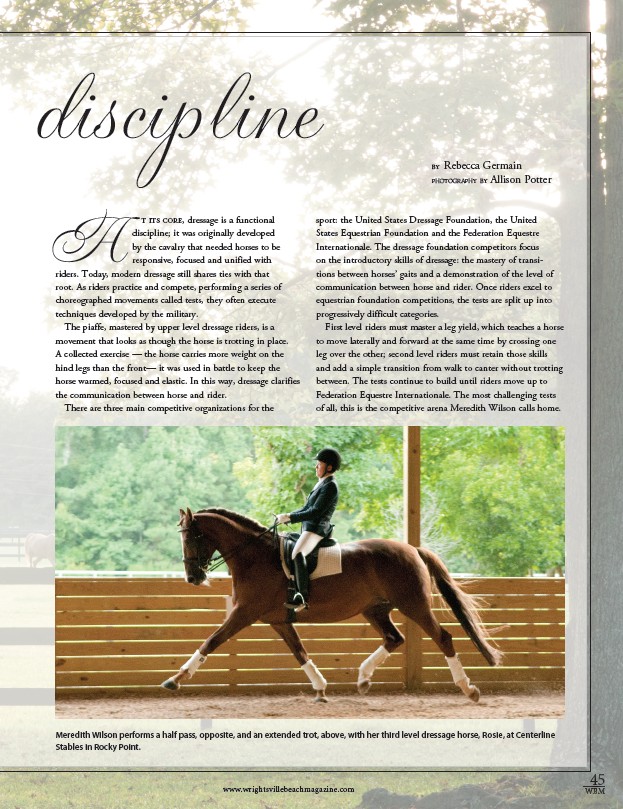
45
WBM
functional discipline
t its core, dressage is a functional
discipline; it was originally developed
by the cavalry that needed horses to be
responsive, focused and unified with
riders. Today, modern dressage still shares ties with that
root. As riders practice and compete, performing a series of
choreographed movements called tests, they often execute
techniques developed by the military.
The piaffe, mastered by upper level dressage riders, is a
movement that looks as though the horse is trotting in place.
A collected exercise — the horse carries more weight on the
hind legs than the front— it was used in battle to keep the
horse warmed, focused and elastic. In this way, dressage clarifies
the communication between horse and rider.
There are three main competitive organizations for the
sport: the United States Dressage Foundation, the United
States Equestrian Foundation and the Federation Equestre
Internationale. The dressage foundation competitors focus
on the introductory skills of dressage: the mastery of transitions
between horses’ gaits and a demonstration of the level of
communication between horse and rider. Once riders excel to
equestrian foundation competitions, the tests are split up into
progressively difficult categories.
First level riders must master a leg yield, which teaches a horse
to move laterally and forward at the same time by crossing one
leg over the other; second level riders must retain those skills
and add a simple transition from walk to canter without trotting
between. The tests continue to build until riders move up to
Federation Equestre Internationale. The most challenging tests
of all, this is the competitive arena Meredith Wilson calls home.
A
by Rebecca Germain
photography by Allison Potter
Meredith Wilson performs a half pass, opposite, and an extended trot, above, with her third level dressage horse, Rosie, at Centerline
Stables in Rocky Point.
www.wrightsvillebeachmagazine.com